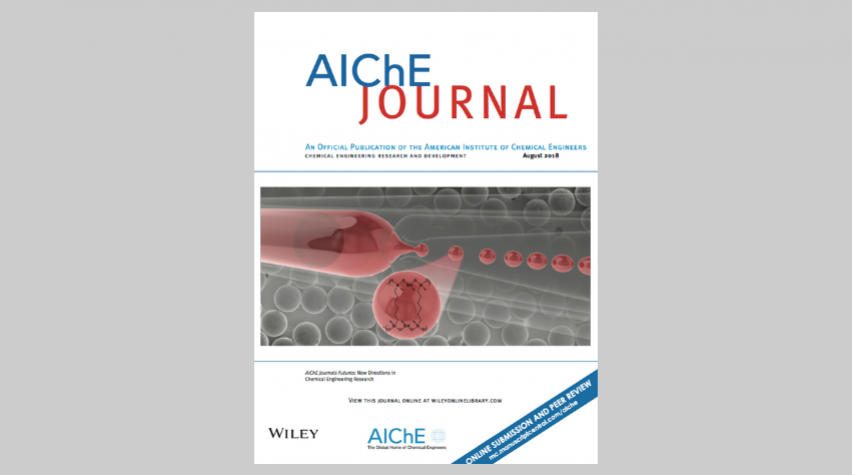
The August issue of the AIChE Journal is the inaugural “Futures” issue. In the keen interest of keeping the Journal aligned with the latest developments in chemical engineering research, early career researchers were invited to contribute their pioneering works. Mike Harold, editor-in-chief of the AIChE Journal, sought the input of the editorial team and consulting editorial board to identify contributors. The only criterion was that the prospective author be seven or less years removed from his or her initial appointment as an academic, industrial, or national lab researcher.
The intent is to publish the Futures issue annually. In addition, a session will be held at the AIChE Annual Meeting (October 28–November 2, 2018 in Pittsburgh, PA), in which several of the authors will have an opportunity to present their research.
Spotlight on emerging scholars
The Futures issue parallels the annual Founders issue, which honors an eminent chemical engineering scholar with a group of contributions from colleagues, former students, and collaborators. While the Founders issue celebrates the scholarly legacies of the greats from our profession, the Futures issue recognizes the scholarly potential of emerging scholars. “Indeed, I am hopeful and expect that a future Amundson, Bird, Prausnitz, Sargent, or Jackson is among the contributors to this inaugural Futures issue!” says Harold.
Contributions span wide range of topics
The contributions, which come from 22 U.S. institutions, as well as two European and one Canadian institute, span the diverse spectrum of chemical engineering research. Seven of the nine thematic areas of the Journal are represented. Process systems engineering leads the way with nine papers, followed by:
- reaction engineering, kinetics, and catalysis (7 papers)
- soft matter: synthesis, processing, and products (3)
- transport phenomena and fluid mechanics (2)
- particle technology and fluidization (2)
- biomolecular engineering, bioengineering, biochemicals, biofuels, and food (2)
- inorganic materials: synthesis and processing (1).
Great examples of new research
Indeed, the contributed articles underscore the breadth of the chemical engineering field.
For example, the Editor’s Choice paper by Milad Abolhasani and coworkers from North Carolina State Univ. describes the single-step synthesis and application of a unique class of polymeric microparticles impregnated with palladium. The particles serve the dual function of microreaction vessels and catalysts for the Suzuki-Miyaura cross-coupling reaction.
Another biomolecular engineering paper by Julie Champion, et al., from Georgia Institute of Technology describes the development of a library of peptide linkers (i.e., critical components of proteins that enable retention of function) with varied properties, such as length and orientation. From this library, the best peptides were identified for selected fusion reactions, demonstrating the utility of the linker library for the design of new fusion proteins.
From the process systems engineering area, there are several notable contributions. For example, Ruth Misener and coworkers (Imperial College London) bring tools in process systems engineering to bear in the development of a computational framework for stem cell biomanufacturing. An application of the framework enables cost reduction while maintaining process performance for a hollow-fiber bioreactor that produces red blood cells from progenitor cells. The approach demonstrates how mathematical modeling and optimization can be applied to bioprocessing.
Advances in process intensification are evident in the papers by Michael Baldea and coworkers from the Univ. of Texas at Austin and by Fernando Lima and coworkers from West Virginia Univ. Baldea, et al. Their work describes a new framework for equation-oriented simulation and optimization of cyclic processes, an emerging class of chemical processes that combine reaction and separation. The method is demonstrated for a simulated moving-bed process.
Lima, et al., describe the combination of bilevel and parallel programming to the process design and intensification of natural gas utilization applications. The approach reduces computational time, enabling natural gas combined-cycle modular plant designs that are smaller in size with fixed net plant efficiency.
Chemical engineers continue to impact the materials science and engineering field. For example, a paper from Kelly Schultz and colleagues (Lehigh Univ.) describes advances in the understanding of one class of cross-linked polymeric gels.
Finally, the two papers in computational catalysis, one from David Hibbitts and coworkers (Univ. of Florida) and the other from Lars Grabow and coworkers (Univ. of Houston), demonstrate how theory is becoming an increasingly important aspect of heterogeneous catalyst understanding and application.
These are just a few examples of the scholarly works from early career researchers. “My feeling is that given the many excellent papers, the future of our profession is bright,” says Harold.
Check out ChEnected's interview with the editor-in-chief of the AIChE Journal, Mike Harold.
See more information about the AIChE Journal Futures: New Directions in Chemical Engineering Research session or the 2018 Annual Meeting.


